Main CPGW Record
Surname: SIMPSON
Forename(s): Timothy Holmes
Place of Birth: Buckden, Yorkshire
Service No: 20007
Rank: Private
Regiment / Corps / Service: Duke of Wellington’s (West Riding Regiment)
Battalion / Unit: 2/6th Battalion
Division: 62nd (2/West Riding) Division
Age: 20
Date of Death: 1917-05-03
Awards: ---
CWGC Grave / Memorial Reference: Bay 6.
CWGC Cemetery: ---
CWGC Memorial: ARRAS MEMORIAL
Non-CWGC Burial: ---
Local War Memorial: HEBDEN, YORKSHIRE
Local War Memorial: LINTON-IN-CRAVEN, YORKSHIRE
Additional Information:
Timothy Holmes Simpson was the son of William and Laura Ann Simpson, née Newcombe. William was born at Aysgarth and Laura at Burneston, Yorkshire.
1901 Buckden, Yorkshire Census: Timothy Holmes Simpson, aged 4 years, born Buckden. [Timothy and his parents, William and Laura, were living with William's father, Timothy H. Simpson, widower.]
1911 Hebden, Yorkshire Census: Croft House - Timothy Holmes Simpson, aged 14 years, born Buckden, Yorkshire, son of William and Laura Ann Simpson.
The British Army Service Record for Timothy Holmes Simpson exists but may be incomplete.
British Army WW1 Medal Rolls Index Cards: Pte Timothy Simpson, 20007, W. Rid. R. Pres. Dead 3.5.17.
British Army WW1 Medal and Award Rolls: Pte Timothy Simpson, 20007, 2nd W. Rid. R.; 2/6th W. Rid. R. Pres. Dead 3.5.17.
Army Registers of Soldiers' Effects: Pte Timothy Simpson, 20007, 2/6th Bn W. Riding. Date and Place of Death: On or since 3.5.17. Death presd. To whom Authorised/Amount Authorised: Mother and Sole Legatee - Laura A. £6 12s.11d.
UK, WW1 Pension Ledgers and Index Cards, 1914-1923: card(s) exist for Timothy.
Timothy was killed in action during the Battle of Bullecourt, 3-17 May 1917.
Photograph courtesy of Ian Simpson.
A short biography of Timothy is included in: ‘Swaledale & Wharfedale Remembered – Aspects of Dales’ life through peace and war’ by Keith Taylor (2006).
Data Source: Craven’s Part in the Great War - original CPGW book entry
View Entry in CPGW BookEntry in West Yorkshire Pioneer Illustrated War Record: ---
---
Click the thumbnail below to view a larger image.
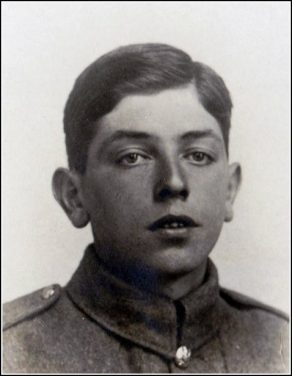
Private Timothy Holmes SIMPSON
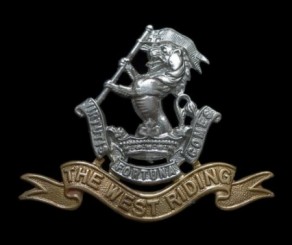
Regiment / Corps / Service Badge: Duke of Wellington’s (West Riding Regiment)

Divisional Sign / Service Insignia: 62nd (2/West Riding) Division
Data from Soldiers Died in the Great War 1914 - 1919 Records
Soldiers Died Data for Soldier Records
Surname: SIMPSON
Forename(s): Timothy
Born: Hipperholme [sic], Yorks
Residence: Hebden Bridge [sic], Yorks
Enlisted: Skipton, Yorks
Number: 20007
Rank: Private
Regiment: Duke of Wellington's (West Riding Regiment)
Battalion: 2/6th Battalion
Decorations:
Died Date: 03/05/17
Died How: Killed in action
Theatre of War: France & Flanders
Notes:
Data from Commonwealth War Graves Commission Records
CWGC Data for Soldier Records
Surname: SIMPSON
Forename(s): Timothy
Country of Service: United Kingdom
Service Number: 20007
Rank: Private
Regiment: Duke of Wellington's (West Riding Regiment)
Unit: 2nd/6th Bn.
Age:
Awards:
Died Date: 03/05/1917
Additional Information:
View Additional Text
View Additional Text For Soldier Records
THE HISTORY OF THE 62nd (WEST RIDING) DIVISION 1914-1919 Volume 1, by Everard Wyrall (John Lane the Bodley Head Limited Vigo Street, London, W.)
THE BATTLE OF BULLECOURT:
3rd – 17th May, 1917.
During the three weeks following the first attack on Bullecourt on 11th April, the 62nd Division was engaged in trench warfare, and in preparing for another attack on the Hindenburg Line which had been ordered to take place on various successive dates and subsequently postponed, until it was definitely decided that Bullecourt should again be attacked on the 3rd May…
3rd MAY
In the centre of the Divisional front, the troops of the 186th Infantry Brigade reached their allotted places by 3-30 a.m., though during the evening of the 2nd, the enemy’s artillery had caused considerable trouble – all forward telephone and telegraph wires having been cut and communication interrupted. The Signallers, however, repaired them and communication was re-established. The 2/5th Duke of Wellington’s (Lieut.-Col. F.W. Best) were on the right, the 2/6th (Lieut.-Col. S.W. Ford) on the left: the 2/7th Battalion (Lieut.-Col. F.G.C. Chamberlin) was in rear of the 2/5th and the 2/4th (Lieut.-Col. H.E. Nash) in the rear of 2/6th.
Three Companies of the 2/8th West Yorks. were formed up in rear of the 2/4th and 2/7th Battalions Duke of Wellington’s Regt., the remaining Company of the 2/8th having been detailed as a carrying party was in rear of the three Companies. The 213th Machine Gun Company supported the 186th Brigade.
On the left of the Divisional front, held by the 187th Infantry Brigade, the 2/4th Battalion York and Lancs. Regt. (Lieut.-Col. F. St. J. Blacker) was on the right, the 2/5th King’s Own Yorks. Light Infantry (Lieut.-Col. W. Watson) with two Companies of the 2/4th Battalion (Lieut.-Col. R.E. Power) of the same Regiment in rear of the two front line battalions, and the remaining two Companies of the 2/4th K.O.Y.L.I. were in rear of the 2/5th Battalion, detailed for ‘carrying’ duties. The 208th Machine Gun Company was in support.
The taping and forming up operations were carried out without serious casualties and were completed by 3-30 a.m., but Lieut.-Col. F. St. J. Balcker, D.S.O., commanding the Hallamshires, was wounded on the forming up line.
Shortly after two o’clock in the morning the moon disappeared and the night turned to inky blackness, but fifteen minutes before Zero all was ready for the attack. At this period the enemy put down a very heavy barrage on the 185th Infantry Brigade, which gradually spread along the whole front.
At Zero the creeping barrage opened on the enemy’s position and the assaulting troops began to move forward immediately. But now an unexpected difficulty presented itself: the warm weather had baked the ground hard and as the shells fell, churning it up, clouds of dust filled the air, and with smoke from the guns, and the smoke bombs, the objectives were hidden from the advancing troops, and there was much loss of direction.
The 2/5th West Yorks. on the left of the 185th Brigade front speedily captured the enemy’s first line trench, the wire entanglements having been well cut. The 2/6th Battalion, however, was not as fortunate: Colonel Hastings’ Battalion had been met by very heavy machine-gun fire which caused many casualties, and in the smoke and confusion sheared off towards the left, overlapping the right of the 2/5th Battalion. Meanwhile the latter had pushed on towards the centre of the village and had established two posts, one at U.27.b.6.8. and the other at U.21.d.5.0. At this point touch was lost with the 2/6th Battalion, though it was eventually established about the church. A pigeon message timed 5-15 a.m. from an officer of the left Company of the third and fourth waves of the 2/5th Battalion which reached Divisional Headquarters stated that the writer was in the communication trench at U.21.d.5.5. with about forty of his men.
On the left of the 185th Infantry Brigade, the 186th had accomplished only part of its task. The 2/5th Duke of Wellington’s found the wire cut and no difficulty was experienced in reaching the second German trench of the first objective. Here touch was obtained with the left of the 185th Brigade, and maintained for several hours until broken by enfilade machine-gun fire from both flanks. But the 2/6th Duke of Wellington’s found the wire uncut and their attack was held up. Hostile shell-fire and the rear waves closing in on the leading waves, added to the confusion and all that could be done was to occupy some shell holes in front of the enemy’s wire. An attempt was then made to cut the second belt of wire, but again machine-gun fire from the north, and the enemy’s activity with bombs frustrated this endeavour and finally the shell-holes were established as posts.
The 2/5th Duke’s had by this time established themselves in the enemy’s front line trench from U.21.d.1.0. to U.20.d.2.4. and had been reinforced by the 2/8th West Yorks.
Similarly on the left of the 186th Brigade, the 187th had met with success – and failure. The 2/5th York and Lancs. Regt. reached its first objective without difficulty, but the 2/4th Battalion was hung up by the thick wire entanglements which were insufficiently cut. In seeking to find a way through the Battalion moved off to its left and became intermingled with the 2/5th Battalion, whose right flank was ‘in the air.’ At about 4-20 a.m. Lieut.-Col. W. Watson, commanding the 2/5th K.O.Y.L.I. was killed as he was gallantly rallying his men and leading them forward.
For a while no reports from the right flank of the attack were received at Divisional Headquarters, and nothing could be ascertained as to what was taking place in the village of Bullecourt. At 6-50 a.m. the situation was so obscure that the protective barrage was ordered to remain on the second objective until a further advance could be organized. A little later (at 7 a.m.) the situation of the 185th Brigade appears to be as follows: Posts had been established at U.21.d.5.5. with a certain number of men further east along the Support line at U.21.d.5.9., U.27.b.6.8. and at the church (U.28.a.0.9.): the whole of the German front line trench as far east as U.27.b. had been occupied. Touch was maintained with the 2/5th Duke of Wellington’s Regt., on the western side of the village and in the trench running south from the Crucifix. But of the 2/6th West Yorks. little was known, and all attempts to communicate with or reach the probable position of the Battalion, failed. Large numbers of men of the Battalion – dead and wounded – were found in front of the German wire. A Company of the 2/7th West Yorks. was sent forward to try to reach their comrades of the 2/6th, but the men were met by a murderous machine-gun fire which swept the line of the advance and after having suffered heavy casualties the Company withdrew to the Railway Embankment.
Repeated attempts by the 186th and 187th Brigades to penetrate the enemy’s positions were frustrated, and at noon the little party of the 2/5th Duke’s and 2/8th West Yorks., were bombed out of their portion of the trench and were forced to take shelter in shell holes south and south-west of Bullecourt. The advance by the 2/5th K.O.Y.L.I., under Major O.C. Watson, at first progressed, but was eventually checked by heavy machine-gun fire and a continuous H.E. barrage.
At mid-day the situation was as follows: about fifty men per battalion of the 186th Infantry Brigade had found shelter on the Railway Line U.26.c. and d., the remainder of the Brigade was in the Sunken Road in U.27.a.5.8. and U.20.d.9.4.: of the 187th Brigade elements were in the Sunken Road in U.20.b. and in shell holes in U.20.c. and d.: the Company of 2/5th West Yorks. (185th Brigade) which had been driven out of the western side of Bullecourt, had also reached the Railway Line, the 2/7th West Yorks. were also at U.27.c. and d., on the Railway Line: but there was still no news of the 2/6th West Yorks.
Just after 5 o’clock in the evening orders from Divisional Headquarters to the three Infantry Brigades contained instructions to the Brigadiers to make every effort to reorganize their battalions on the line of their original fronts, in their own sectors: the 7th Division was to take over the front held by the 185th Infantry Brigade as soon as possible. The same orders stated that the VIIth Corps had taken Chérisy and the 2nd Australian Division (on the right of the 62nd Division) was in occupation of the Hindenburg Line from U.23.c.8.1. to U.22.d.6.3.
The failure of the 62nd Division to capture Bullecourt was due largely to a fault which certainly cannot be charged to the gallant troops who stormed the village and the Hindenburg Line in the vicinity. Neither could the Divisional Staff, which had laboured to make all arrangements as complete as possible, be blamed. It was due principally to an error in tactics which had so often failed in the earlier years of the war – notably at Festubert in 1915. The Australian Division on the right of the 62nd Division did not launch its attack side by side with the 2/6th West Yorks., the flanking battalion of the West Riding Division. There was a gap – a fatal gap – in the line of attack between the Colonials and the Yorkshiremen, the former having decided to attack the first objective frontally, only as far to the left as U.23.d.6.3., and then bomb down the Hindenburg Line westwards to the left boundary where touch was to be gained with the 185th Infantry Brigade. Thus some hundreds of yards of the enemy’s positions (unfortunately that portion which was very strongly defended by machine-guns) was left free to enfilade the 2/6th West Yorks. as that Battalion advanced: which indeed happened. In all justice to the Australian troops it must be noted that they reached their objective, but before they got there the West Yorkshiremen had been cut up and of those brave fellows who had penetrated the village the greater number had either been killed, wounded, or taken prisoner, only a hundred survivors getting back to their own trenches.
The inky blackness of the night, which caused much confusion during the forming-up operations, also contributed to the failure of the assault, many of the troops losing themselves and being entirely ignorant of the direction of the enemy’s trenches.
The enemy was in considerable strength, the 49th Reserve Division and the 27th Division was holding the Hindenburg Line between Fontaine and Riencourt (inclusive). The latter had with it the 1st Musketeen (Automatic Rifle) Battalion.
Many deeds of gallantry were witnessed during that attack, and the Division emerged from its first set battle sorely tried and tested and badly mauled, but with many proofs of its fighting qualities… The casualties of the 62nd (W.R.) Division on the 3rd May were: 116 officers and 2,860 other ranks, killed, wounded and missing…
The 62nd had been ‘Blooded’!
At dusk on the 3rd, the 185th Infantry Brigade was relieved by the 22nd Infantry Brigade (7th Division), only the 2/7th West Yorks. remaining in the line under the command of the General Officer Commanding 7th Division.
4th MAY
The remnants of the 2/5th, 2/6th and 2/8th West Yorks. were withdrawn to caves in Ecoust, to reorganize: on the following day they marched to Ervillers. The 186th and 187th Brigades remained in the line, the 62nd Divisional front now extending from the Mory – Ecoust – Bullecourt Road (inclusive) to the left of the Vth Corps boundary, Judas Farm – Sensee River, to along the road at T.24.a.9.4. – U.14.c.2.9…
12th MAY
The final attack on Bullecourt began on the 12th May when the 185th Infantry Brigade assisted the 7th (British) and 5th (Australian) Divisions, by attacking the enemy’s strong point at the Crucifix.
The 2/7th Battalion West Yorks. was detailed for this operation, the 185th Trench Mortar Battery and one Section of the 212th Machine-Gun Company co-operating. Two Companies of the Battalion – B and C – attacked the Crucifix at Zero (3-40 a.m.) pus 26 minutes, but for a while no information of the situation of the attacking troops was obtainable. The 91st Brigade (7th Division) had reached the centre of the village, capturing a few Germans, but here very heavy machine-gun fire held up any further advance. About 6-30 a.m., however, an aeroplane report was received at 62nd Divisional Headquarters which stated that men of the 2/7th could be seen well dug in at the Crucifix. But from this period onwards, throughout the day, nothing could be ascertained, it being impossible to gain touch with the gallant West Yorkshiremen holding the post at the Crucifix. Possibly one of those isolated fights to a finish which were not uncommon in the War, but of which no authentic records are in existence, took place. For at 8 p.m. another aeroplane reported that the Germans once more held the Crucifix. At 10 o’clock that night patrols which attempted to reach the post were driven back, thus confirming the aeroplane report. Subsequently a few odd men returned through the lines of the 1st South Staffords (7th Division), having lost their way, but of the two officers and thirty-one other ranks who were known to be holding the Crucifix none returned nor was any further information gained concerning their fate. Five killed, thirty-one missing and thirty-two wounded were the casualties suffered by the 2/7th West Yorks. in this affair…
View Craven Herald Articles
View Craven Herald Articles

03 May 1918
SIMPSON – In loving memory of our dear and eldest son, Lance-Corporal T. H. Simpson (Tim), who has been missing since May 3rd, 1917. Now presumed killed on that date.
“A day of remembrance sad to recall.”
From Father, Mother, Brothers and Sisters, Croft House, Hebden.
SIMPSON – In loving memory of our dear brother, Lance-Corporal T. H. Simpson, missing since May 3rd, 1917, now presumed killed.
“We miss him most who loved him best.”
From Ted and Mary, Surf [Turf] Gate, Hebden.
18 April 1919
HEBDEN – THE FATE OF A HEBDEN SOLDIER
The accompanying photograph is that of Lance Corporal Timothy Holmes Simpson, Duke of Wellington’s (West Riding) Regiment, son of Mr. and Mrs. Wm. Simpson, Croft House, Hebden, who is now officially presumed to have been killed in the fierce fighting on the Western Front on May 3rd 1917, when so many Craven lads went under. Twenty years of age, Lance Corporal Simpson enlisted when nineteen on April 8th 1916, and proceeded in a draft for France in the following August. He was wounded on October 4th 1916, and returned to England. He rejoined his Regiment on January 26th 1917, and again went to France on March 3rd. Since the fighting on May 3rd 1917, he has not been heard of, although enquiries have been instituted in all the known channels. In civil life Lance Corporal Simpson was a farm labourer in the employ of Mr. Stockdale of Burnsall.
02 May 1919
SIMPSON – In ever loving remembrance of our dear son and brother, Lance-Corporal T. H. (Tim) Simpson, Duke of Wellington’s, reported missing May 3rd, 1917, afterwards presumed to have died on that date.
In our home you are fondly remembered,
Sweet memories cling around your dear name;
Hearts that held you in deepest affection
Do love you in death just the same.
“Only those who have loved and lost can understand.”
From his loving Father and Mother, Brothers and Sisters, Croft House, Hebden.
09 May 1919
SIMPSON – In loving remembrance of our dear brother, Lance-Corporal T. H. Simpson (Tim), Duke of Wellington’s Regiment, presumed killed on May 3rd, at Bullecourt.
You’re not forgotten, brother dear.,
Or will you ever be;
As long as life and memory last
We will remember thee.
From Ted and Mary, Turf Gate, Hebden.
30 April 1920
SIMPSON – In ever loving memory of our dear son and brother, L Cpl. Timothy Holmes Simpson (Tim), reported missing May 3rd, 1917, afterwards presumed killed on that date.
Three years have passed, and we still miss you,
Never shall your memory fade;
Sweet thoughts shall ever linger
On the unknown grave where you are laid.
From Father, Mother, Brothers and Sisters, Croft House, Hebden.
SIMPSON – In ever loving memory of our dear brother, L Cpl. T. H. Simpson (Tim), reported missing May 3rd, 1917, afterwards presumed killed on that date at Bullecourt, aged 20 years.
“To memory ever dear.”
From his loving Sister and Brother-in-law, Ted and Mary, Turf Gate, Hebden.
29 April 1921
SIMPSON – In ever loving memory of our dear brother, Lance-Cpl. T. H. Simpson (Tim), who was reported missing May 3rd, 1917, afterwards presumed killed, aged 20 years.
“The Lord giveth, and the Lord taketh away. Bless ye the name of the Lord.”
From Ted and Mary, Turf Gate, Hebden.
SIMPSON – In ever loving memory of our dear son and brother, Lce.-Cpl. T. H. (Tim) Simpson, Duke of Wellington’s West Riding Regt., who was reported missing 3rd May, 1917, aged 20 years.
“Time passes, but loving memories still remain.”
Croft House, Hebden.
---
Comment on this Soldier Record
You can leave comments on this soldier record. Please note all comments will be manually approved before they appear on the website.


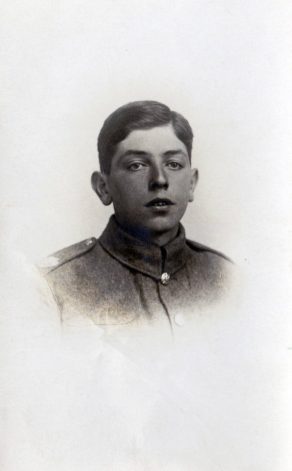
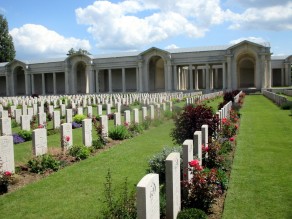
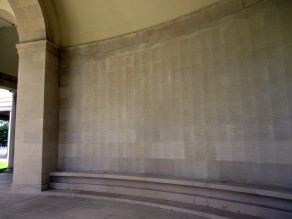



No comments yet.